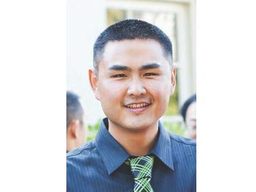Applied Mathematics Colloquium
Dr. Joshua Chang, Clinical Center, NIH
Location
Mathematics/Psychology : 106
Date & Time
April 8, 2016, 11:30 am – 12:30 pm
Description
Abstract: In vertebrates, insufficient availability of calcium and phosphate ions in extracellular fluids leads to loss of bone density and neuronal hyper-excitability. To counteract this problem, calcium ions are present at high concentrations throughout body fluids -- at concentrations exceeding the saturation point. This condition leads to the opposite situation where unwanted mineral sedimentation may occur. Remarkably, ectopic or out-of-place sedimentation into soft tissues is rare, in spite of the thermodynamic driving factors. This fortunate fact is due to the presence of auto-regulatory proteins that solubilize nucleated phases. Yet, many important inflammatory disorders such as atherosclerosis and osteoarthritis are associated with this undesired calcification. Hence, it is important to gain an understanding of the regulatory process and the conditions under which it can go awry.
In this talk I describe a theoretical approach to studying this and other problems of colloidal stabilization through the binding of inhibitors. We adapted mean-field classical nucleation theory to the case of surface-shielding in order to study the regulation of sedimentation of calcium phosphate salts in biological tissues through the mechanism of post-nuclear shielding of nascent mineral particles by binding proteins. Mathematically, our description of this phenomenon uses a countable system of serially coupled hyperbolic partial differential equations. Analysis of this system of equations revealed a criteria for the effective maintenance of a stable supersaturated system as well as sensitivities of the system to changes in both the concentrations of constituent ions and the regulatory protein.
